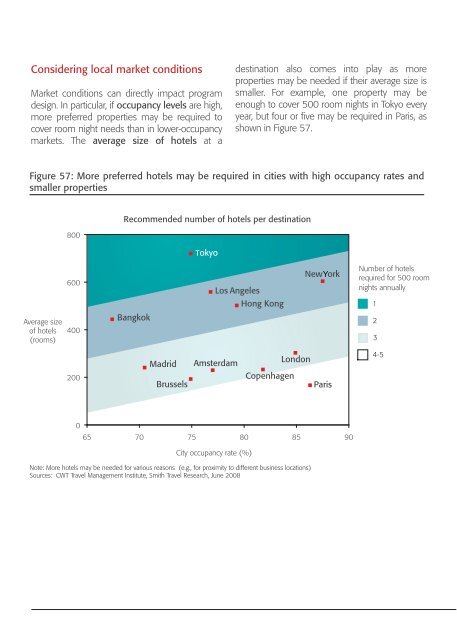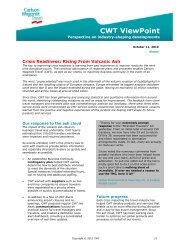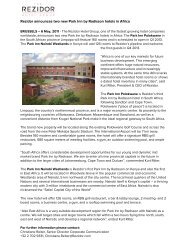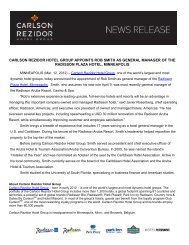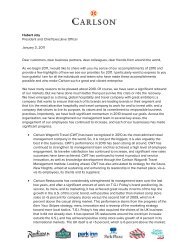Room for Savings: Optimizing Hotel Spend - Carlson
Room for Savings: Optimizing Hotel Spend - Carlson
Room for Savings: Optimizing Hotel Spend - Carlson
Create successful ePaper yourself
Turn your PDF publications into a flip-book with our unique Google optimized e-Paper software.
Considering local market conditions<br />
Market conditions can directly impact program<br />
design. In particular, if occupancy levels are high,<br />
more preferred properties may be required to<br />
cover room night needs than in lower-occupancy<br />
markets. The average size of hotels at a<br />
destination also comes into play as more<br />
properties may be needed if their average size is<br />
smaller. For example, one property may be<br />
enough to cover 500 room nights in Tokyo every<br />
year, but four or five may be required in Paris, as<br />
shown in Figure 57.<br />
Figure 57: More preferred hotels may be required in cities with high occupancy rates and<br />
smaller properties<br />
800<br />
Recommended number of hotels per destination<br />
Tokyo<br />
600<br />
Los Angeles<br />
Hong Kong<br />
New York<br />
Number of hotels<br />
required <strong>for</strong> 500 room<br />
nights annually<br />
1<br />
Average size<br />
of hotels<br />
(rooms)<br />
400<br />
Bangkok<br />
2<br />
3<br />
200<br />
Madrid<br />
Brussels<br />
Amsterdam<br />
Copenhagen<br />
London<br />
Paris<br />
4-5<br />
0<br />
65 70 75 80 85 90<br />
City occupancy rate (%)<br />
Note: More hotels may be needed <strong>for</strong> various reasons (e.g., <strong>for</strong> proximity to different business locations)<br />
Sources: CWT Travel Management Institute, Smith Travel Research, June 2008


